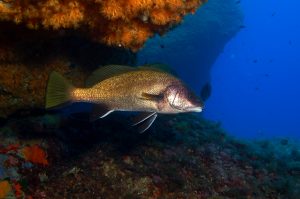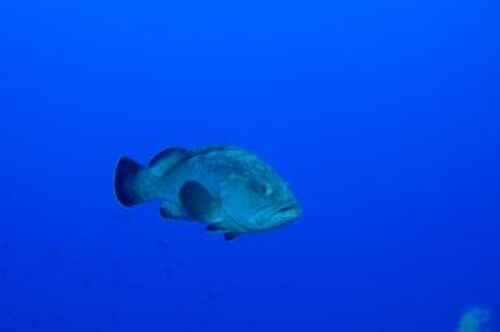
World Environment Day operation to count groupers and brown meagres
Marine Protected Areas
Monday, June 5, 2017, on the occasion of World Environment Day, the AMPN, the CESMM and the ECOMERS laboratory organized a count of groupers in the Larvotto marine protected area.
20 divers explored the dykes of the beach and the Sporting and recorded the information according to a precise protocol.
About forty groupers and more than 50 brown meagres were observed. More than 40% of small groupers, less than 40 cm in total length, were seen. This high percentage testifies to the importance of the protection offered by the Larvotto Marine Protected Area for young groupers. The abundance of brown meagres encountered is also a very positive sign of the role of the Larvotto reserve.
Dusky grouper, Epinephelus marginatus, is the most abundant grouper species in the Mediterranean; it is considered by experts from the IUCN (International Union for Conservation of Nature) as an endangered species. The last assessment of the global status of the different grouper species took place in the Azores in November 2016. A member of the Grouper Study Group (GEM) was in charge of the assessment of Mediterranean groupers.
Dusky grouper has been subject to a moratorium in France prohibiting spearfishing since 1993. The current moratorium (2013-2023) also prohibits angling.
The brown meagre, Sciaena umbra, is subject to a moratorium in France prohibiting spearfishing since 2013 for a period of 5 years.
In Monaco, the dusky grouper is a species protected by the Sovereign Ordinance of January 29, 1993 which prohibits spearfishing and fishing.
In 1995, at the request of the AMPN, the GEM began inventory missions for dusky groupers, Epinephelus marginatus, in the waters of the Principality of Monaco. These missions took place in October 1995 and October 1997.
The GEM continued its dusky grouper inventory missions in the waters of the Principality in 2006, 2009, 2012 and 2015.
As part of the RAMPAM program (local network of marine protected areas), counts of groupers will take place in the reserves of Roquebrune, Beaulieu, and Larvotto.

